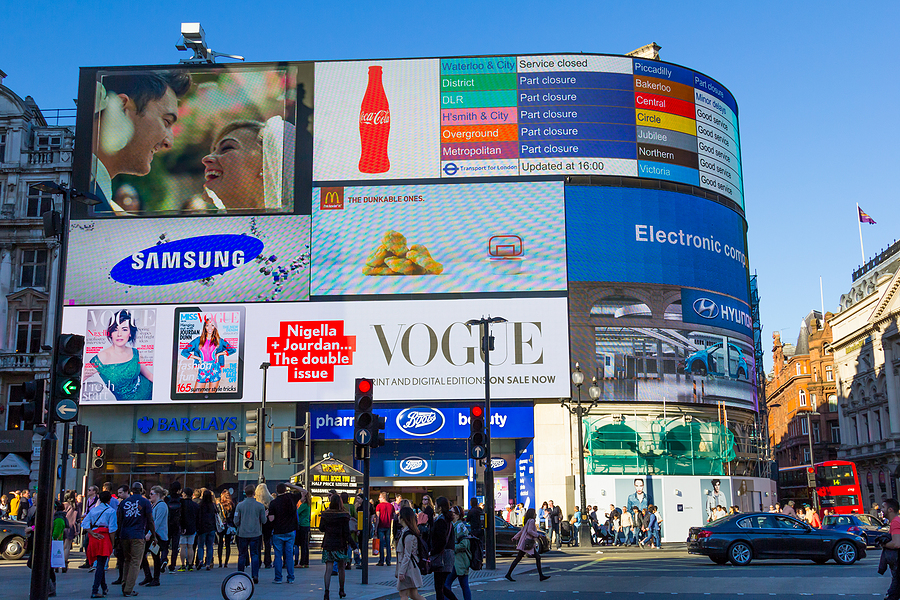Outdoor advertising, or ‘out of home’ advertising (OOH) as it is sometimes called, is a key method of increasing a brand’s visibility. It was once considered the preserve of big companies with the budgets to rent static billboard space, but new technology means that OOH is now a much more adaptive and interactive medium.
Outsmart, the UK’s out-of-home advertising trade association, reports that OOH is currently experiencing unprecedented levels of growth. The revolution began twenty years ago, with the introduction of backlighting and moving facia, meaning that advertisements could be visible 24 hours a day, and rotated to display a series of different images.
Since then, digital technology has created a huge diversity of OOH advertising options. According to Outsmart, outdoor advertising reaches 98% of the UK population every week. Most people spend some time out and about each day, and unlike advertising consumed in the home, OOH is difficult to block out.
The public nature of OOH advertising immediately boosts brand status and recognition, and has great impact in areas of high traffic, such as busy road junctions, bus shelters, railway stations, and shopping centres. As people tend to be more ‘switched on’ when they are out and about, they engage and absorb information more easily.
This active mindset means that consumers are much more likely to take on board new messages than if they were simply browsing online or watching TV. Smartphones enable people to quickly respond to ‘calls to action’, or take a photo of a web address to look up later on, or simply share an eye-catching image online.
The methods of placing OOH material are much more sophisticated and accurate these days too. Planners have access to detailed information about footfall patterns, meaning that adverts can be placed in the most relevant places for maximum exposure to the target audience.
The flexibility of the medium means that not only will the advertisements be in the right place, but they can be timed to the day or even the hour. A new message can be put in front of an audience very quickly, without the months-long process of commissioning, producing, and procuring new billboard materials and hoarding space.
Audiences are therefore seeing increasingly relevant and up to the minute messages, which they are much more likely to engage with, and to keep in their minds. Outsmart reports that the group most brands want to connect with—young, affluent urban dwellers who are out and about a lot and digitally native, are most responsive to OOH advertising.
OOH is not limited to the traditional image, tagline, and call to action format. Video content can be run in the street, and plot teasers for films and TV series shown to mass audiences. The live streaming of sporting and cultural events has become mainstream during the pandemic, when indoor entertainment was off-limits.
With multiple options of scale, geographical reach and location, format, timing, and audience exposure, OOH advertising is increasingly becoming the most powerful medium for brands to connect with their target audiences.
For digital signage companies, visit our website today.
